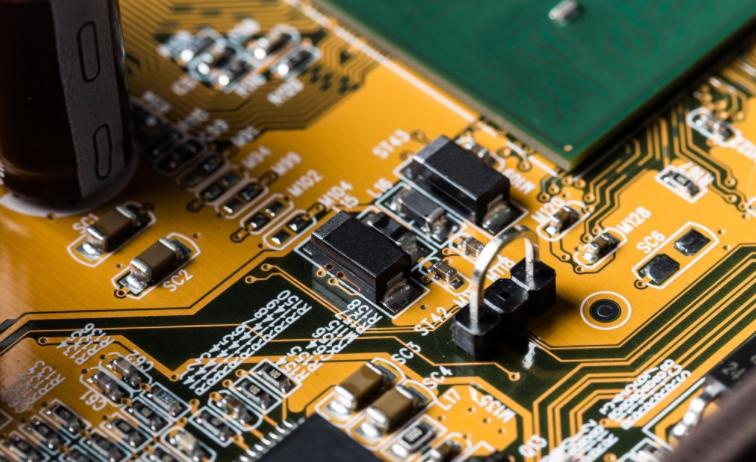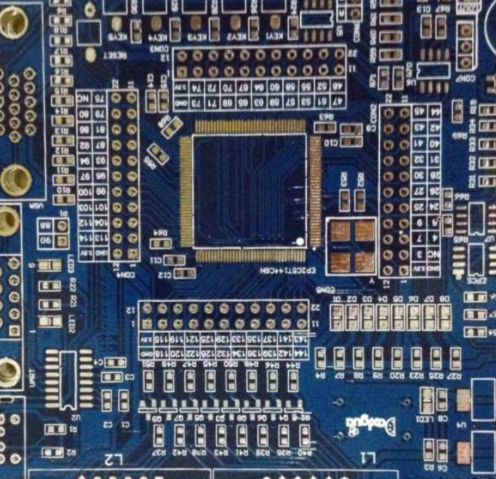
Analysis and Restraining Method of Ground Wire Interference in PCB Wiring
1 Definition of ground wire
What is a ground wire on PCB board? The definition of ground wire learned by everyone in the textbook is: ground wire is an equipotential body, which is used as the reference point of circuit potential This definition does not accord with the actual situation The potential on the actual ground wire is not constant If you use an instrument to measure the potential between the points on the ground wire, you will find that the potential of each point on the ground wire may vary greatly It is these potential differences that cause the abnormal operation of the circuit The definition of circuit as equipotential body is only the expectation of people on ground potential Henry gave a more realistic definition of ground wire, which he defined as the low impedance path of signal flow back to the source The current in the earth wire is highlighted in this definition According to this definition, it is easy to understand the cause of potential difference in grounding wire Because the impedance of the ground wire is never zero, the voltage drops when the current flows through a finite impedance Therefore, we should imagine that the potential on the ground wire is like a wave in the sea, one after another
PCB boards

2. The impedance of the ground wire
When it comes to the potential difference between the points on the ground wire caused by the impact of the ground wire, many people think it is inconceivable: When we measure the resistance of the ground wire with an ohmmeter, the resistance of the ground wire is usually milliohms. When the current flows through such a small resistor, how can such a large voltage drop occur, which leads to abnormal circuit operation To understand this problem, we must first distinguish the two different concepts of wire resistance and impedance Resistance refers to the resistance of the guide wire to the current in the DC state, and impedance refers to the resistance of the wire to the current in the AC state, which is mainly caused by the inductance of the wire Any wire has an inductance. When the frequency is very high, the impedance of the wire is much greater than the DC resistance In the actual circuit, the signal that causes electromagnetic interference is usually pulse signal. The pulse signal contains rich high-frequency components, and this grounding wire will generate large voltage For digital circuits, the operating frequency of the circuit is very high. In addition, this ground impedance has a great impact on digital circuits If the impedance at 10Hz is approximately regarded as DC resistance, it can be seen that when the frequency reaches 10MHz, the impedance of a 1m long wire is 1000 to 100 times the DC resistance Therefore, for RF current, when the current flows through the grounding wire, the voltage drop is large It can also be seen from the table that the new conductor diameter is very effective in reducing DC resistance, but has limited effect on reducing AC impedance But in electromagnetic compatibility, people are concerned about AC impedance In order to reduce AC impedance, an effective method is to connect multiple wires in parallel When two wires are connected in parallel, the total inductance L is: L=(L1+M)/2. Where L1 is the inductance of a single wire and M is the mutual inductance between two wires It can be seen from the formula that when two conductors are far apart, the mutual inductance between them is very small, and the total inductance is half of the inductance of a single conductor Therefore, we can reduce the grounding impedance through multiple grounding wires However, it should be noted that the distance between multiple wires should not be too close
3. Ground wire interference mechanism
3.1 Ground loop interference
Because of the ground wire impedance, when the current flows through the ground wire, voltage is generated on the ground wire When the current is high, the voltage may be high For example, when starting high-power electrical appliances nearby, strong current will flow through the grounding wire This current generates a current in the connecting cable between the two devices Due to the imbalance of the circuit, the current on each wire is different, and differential mode voltage will be generated, which will affect the circuit Because this kind of interference is caused by the loop current formed by cables and ground wires, it becomes the grounding loop interference The current in the grounding circuit can also be induced by the external electromagnetic field
3.2 Common Impedance Interference
When two circuits share a ground wire, due to the impedance of the ground wire, the ground potential of one circuit will be modulated by the working current of the other circuit The signal in this circuit is coupled to another circuit. This coupling is called common impedance coupling In digital circuits, due to the high signal frequency, the ground wire usually presents a large impedance At this time, if different circuits share a section of ground wire, common impedance coupling may occur Assuming that the output level of grid 1 changes from high to low, the parallel capacity in the circuit (values there is a filter capacitor at the input of gate 2) will discharge to the ground wire through gate 1. Due to the impedance of the ground wire, the discharge current will be the peak voltage generated on the ground wire If the output of grid 3 is low at this time, the peak voltage will be transmitted to the output of grid 3 and the input of grid 4 If the amplitude of the peak voltage exceeds the noise threshold of grid 4, gate 4 will fail
4. Ground wire interference countermeasures
4.1 Countermeasures for grounding circuit It can be seen from the mechanism of grounding circuit interference that as long as the current in the grounding circuit is reduced, the grounding circuit interference can be reduced If the current in the grounding circuit can be completely eliminated, the interference problem of the grounding circuit can be completely solved Therefore, we propose the following solutions to solve the grounding circuit interference
1) Floating the equipment at one end If the circuit at one end is floating, the grounding circuit is cut off, and the grounding circuit current can be eliminated But there are two problems that need attention First, for safety reasons, circuits are usually not allowed to float In this case, consider grounding the equipment through inductors With this kind of pipeline, the grounding impedance of 50Hz AC current equipment is very small. For interference signals with high frequency, the grounding impedance of equipment is large, reducing the grounding loop current But this can only reduce the ground loop interference of high frequency interference Another problem is that although the device is floating, there is still parasitic capacitance between the device and the ground This capacitor provides lower impedance at higher frequencies, which cannot effectively reduce the current of high-frequency grounding loop
2) Use the transformer to realize the connection between the devices. The grounding loop current can be cut off by connecting two devices with magnetic circuit However, it should be noted that the parasitic capacitance between the primary and secondary of the transformer can still provide a path for the high frequency grounding circuit current. Recall that the transformer isolation method has poor suppression effect on the high frequency grounding circuit current One way to improve the high frequency isolation effect of the transformer is to set a mask layer between the primary and secondary of the transformer However, it must be noted that the grounding terminal of the isolation transformer shield must be located at the receiving end of the circuit Otherwise, it can not improve the high frequency isolation effect, but also make the high frequency coupling more serious Therefore, the transformer should be installed on the side of the signal receiving device A well shielded transformer can provide effective isolation at frequencies lower than 1 MHz
3) Using an optical isolator Another way to cut off the ground loop is to use light to transmit signals. This can be said to be an ideal solution to the problem of grounding circuit interference There are two methods of optical connection, one is optocoupler, the other is optical fiber connection The parasitic capacitance of the optocoupler is usually 2 pf, which can provide good isolation at very high frequencies Optical fiber has almost no parasitic capacitance, but in terms of installation, they are inferior to optocouplers, maintenance and cost
4) Using a common mode choose coil The use of a common mode choose coil on the connecting cable is equivalent to increasing the impedance of the ground loop, so as to reduce the current of the grounding circuit under The action of a certain grounding voltage However, attention should be paid to controlling the parasitic capacitance of the common mode choke, otherwise, the isolation effect of high-frequency interference is poor The more turns of the common mode choke, the greater the parasitic capacitance and the worse the high frequency isolation
4.2 Eliminate common impedance coupling
There are two ways to eliminate the common impedance coupling. One is to reduce the impedance of the common ground wire. After all, the voltage on the common ground wire will also be reduced, thus controlling the common impedance coupling Another method is to avoid the common ground wire of circuits easy to interfere with each other by proper grounding method Generally, it must be avoided that strong current circuits and weak current circuits share ground wires, and digital circuits and analog circuits share ground wires As mentioned earlier, the problem of reducing the ground wire impedance is to reduce the inductance of the ground wire This includes grounding with flat conductors and multiple spaced parallel conductors For printed circuit board, laying grounding grid on double-layer board can effectively reduce the impedance of grounding wire Although one layer of the multilayer board is used as the ground wire, its impedance is very small, but this will increase the cost of the circuit board The grounding method to avoid common impedance through proper grounding is to connect single points to the ground side by side The disadvantage of parallel grounding is that there are too many grounding conductors Therefore, in practice, not all circuits must be grounded in parallel at a single point For circuits with small mutual interference, single point series grounding can be used For example, circuits can be classified according to strong signals, weak signals, analog signals, digital signals, etc, Then series single point grounding is used in similar circuits, and parallel single point grounding is used for different types of circuits
5. Summary
The main reason for the electromagnetic interference caused by the ground wire is the impedance of the ground wire. When the current flows through the ground wire, the ground wire will generate voltage, which is ground wire noise Driven by this voltage, the grounding circuit current will be generated, causing interference to the grounding circuit When two circuits share a section of ground, common impedance coupling occurs The method to solve the interference of the grounding circuit is to cut off the grounding circuit, add the impedance of the grounding circuit, and use the balance circuit The solution of common impedance coupling is to reduce the impedance of common ground wire, or use parallel single point grounding connection to completely eliminate PCB board







